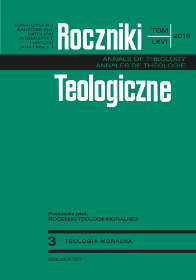What about the Interior Castle? Response to Ienca's and Andorno's New Human Rights in the Age of Neuroscience and Neurotechnology
What about the Interior Castle? Response to Ienca's and Andorno's New Human Rights in the Age of Neuroscience and Neurotechnology
Author(s): Oktawian NawrotSubject(s): Christian Theology and Religion, Theology and Religion, Systematic Theology
Published by: Towarzystwo Naukowe KUL & Katolicki Uniwersytet Lubelski Jana Pawła II
Keywords: cognitive liberty; freedom of thought; freedom of conscientious; neuroscience; philosophy of human rights
Summary/Abstract: Ienca's and Andorno's propositions of three new human rights presented in the article “Towards new human rights in the age of neuroscience and neurotechnology” prima facie seems very attractive and adequate to nowadays dangerous for human freedom. But there are still a few very serious doubts. The first of them is very general and we can express it in the question: is there a possibility to reconcile the philosophy neuroscience/neurotechnology and the related with them way of thinking about the individual, with the philosophy of human rights? The second is more specific but strictly connected with the first one: how do we reconcile the technological infiltration into our interior castle − the brain and its associated mind − with the freedom of thought, conscience, and religion, not only as our individual essence but also as part of the foundation of a democratic state ruled by law? In the article presented above I've tried to show the inadequacy of both systems, especially inherently associated with them visions of human being.
Journal: Roczniki Teologiczne
- Issue Year: 66/2019
- Issue No: 3
- Page Range: 69-85
- Page Count: 17
- Language: English

